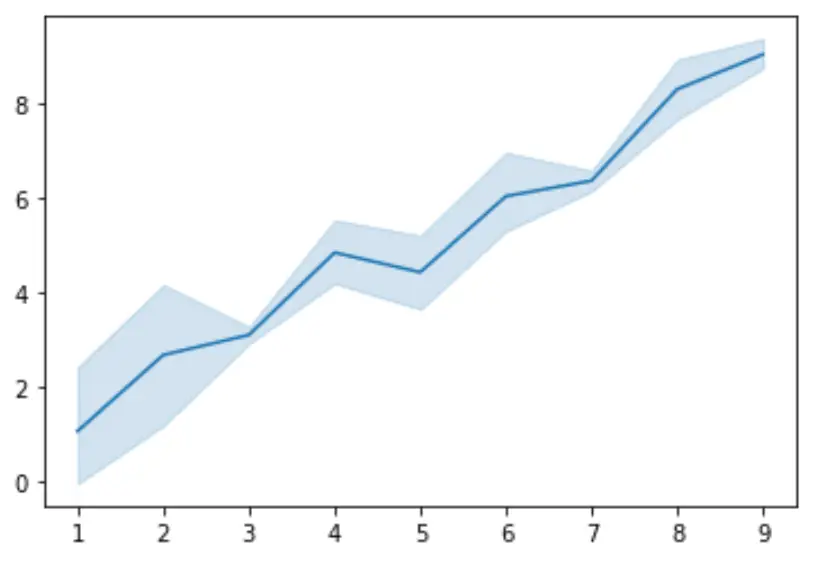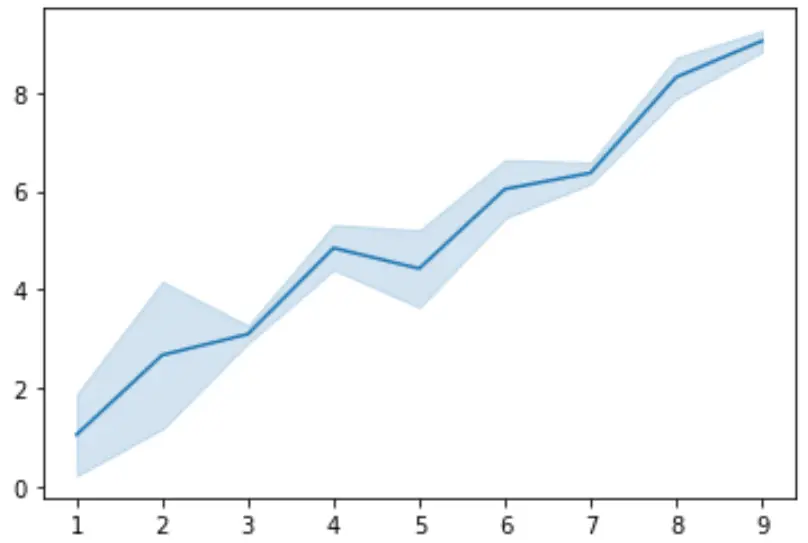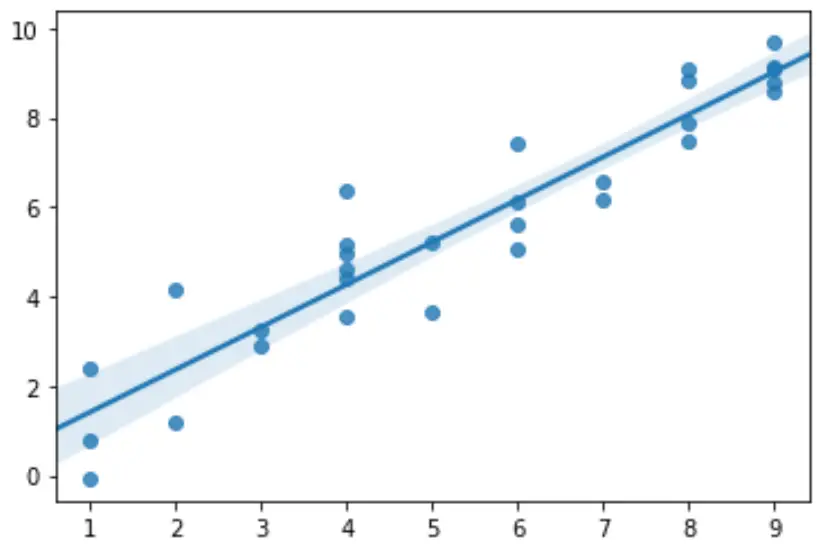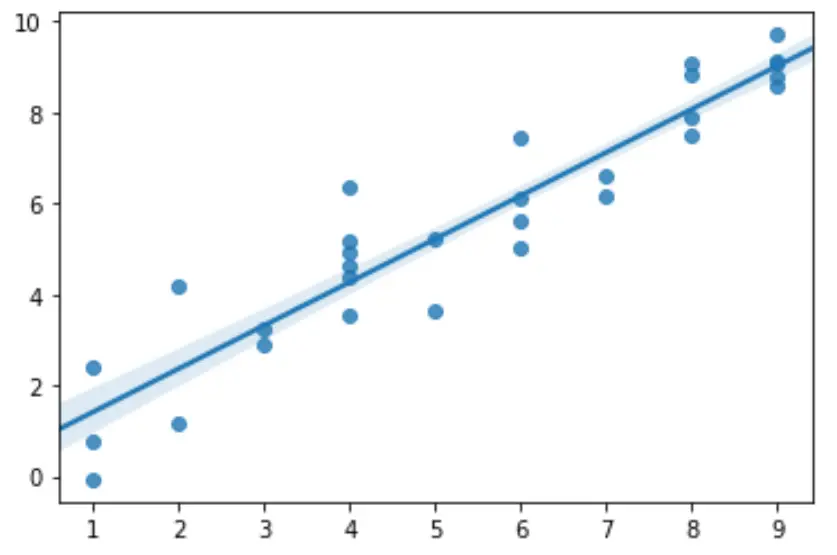如何在 python 中绘制置信区间
置信区间是可能包含具有一定置信水平的总体参数的值范围。
本教程介绍如何使用Seaborn 可视化库在 Python 中绘制数据集的置信区间。
使用 lineplot() 绘制置信区间
绘制置信区间的第一种方法是使用lineplot() 函数,它将数据集中的所有数据点用一条线连接起来,并显示每个点周围的置信带:
import numpy as np import seaborn as sns import matplotlib.pyplot as plt #create some random data np.random.seed(0) x = np.random.randint(1, 10, 30) y = x+np.random.normal(0, 1, 30) #create lineplot ax = sns.lineplot(x, y)

默认情况下,lineplot() 函数使用 95% 置信区间,但可以指定与ci命令一起使用的置信水平。
置信水平越小,线周围的置信区间越窄。例如,对于完全相同的数据集,80% 的置信区间如下所示:
#create lineplot ax = sns.lineplot(x, y, ci= 80 )

使用 regplot() 绘制置信区间
您还可以使用regplot() 函数绘制置信区间,该函数显示数据集的散点图,其中估计回归线周围有置信带:
import numpy as np import seaborn as sns import matplotlib.pyplot as plt #create some random data np.random.seed(0) x = np.random.randint(1, 10, 30) y = x+np.random.normal(0, 1, 30) #create regplot ax = sns.regplot(x, y)

与 lineplot() 类似,regplot() 函数默认为 95% 置信区间,但可以指定与ci命令一起使用的置信水平。
同样,置信水平越小,回归线周围的置信区间就越窄。例如,对于完全相同的数据集,80% 的置信区间如下所示:
#create regplot ax = sns.regplot(x, y, ci= 80 )
